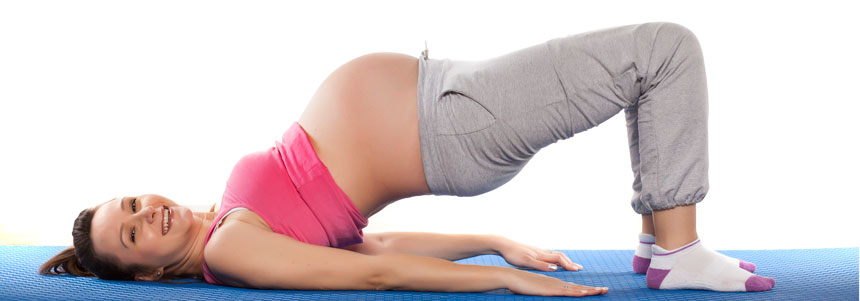During the gestation period, the body changes rapidly, and these changes cause a lot of discomfort, causing the woman to feel pain and present a bad posture. In this phase, conditioning exercises done with the help of Pilates exercise techniques can be of great help, easing pain and improving posture. But for this, the pregnant woman must first seek medical advice, and if there is no medical contraindication, she can start the Pilates exercise after completing the third month of pregnancy and can continue practicing until the end of the seventh month, more remember, To do this, you must first inform your doctor. Pilates during pregnancy provides many benefits such as: Strengthening and stretching the muscles of the abdomen, also the glutes and the lower back, which is part of the body responsible for supporting the spine, in addition to reducing the sensation of very common discomfort among pregnant women, it also reduces swelling in the legs and back pain. The pregnant woman who practices Pilates acquires a good physical condition that provides her well-being, in addition to controlling her weight, she will have a stronger abdomen that will make labor easier.
As the muscles of the abdomen will be stronger they will facilitate the birth of the baby. The uterus will contract to expel the baby, and automatically at this point as a reflex act, the woman does the abdominal pressure that pushes the baby through the vagina canal. At this time you can see the benefits of Pilates, as a strong abdomen makes this job a lot easier. Another advantage for those who practice Pilates is that after the baby is born if the muscles are well prepared, recovery will be faster. During the practice of Pilates, without a doubt, the priority is that the movements are performed correctly, and the pregnant woman must be accompanied by a qualified instructor to enable and guarantee an adequate posture of the pregnant woman. In these cases, the main objective is to make few repetitions of movements and with a light load so that it will not cause problems during pregnancy.
With the regular practice of Pilates during pregnancy, you can contribute a lot to the general health conditions of the pregnant woman and even facilitate the activity of childbirth. Pilates movements strengthen the body, control weight gain, relieve pain resulting from pregnancy and improve the posture of the future mother. In addition, Pilates also helps to relieve cramps and minimize the discomfort of pregnancy swelling, pain in the spine and hips. At the time of normal birth, the main benefits of Pilates are related to breathing control, body awareness, and the preparation of the pelvic floor muscles. The method will also prepare the mother to feel relaxed and ready for childbirth, helping to relieve anxiety, so frequent during this phase. Did you like it? Share with those who need it.
What cares should I take to practice Pilates in Pregnancy?
Although the benefits of pilates for pregnant women are numerous, it is important to note that some precautions must be taken. As stated earlier, pilates for pregnant women can already be practiced since the third month. However, this recommendation is necessarily given to future mothers who already practiced some type of physical activity before becoming pregnant. For sedentary moms, it is important to seek medical advice before starting to practice. In some cases, pilates may be recommended only after the baby is born. Now if you are free to practice pilates during pregnancy, avoid or be more careful when practicing some exercises, such as: rolling exercises, trunk or abdominal crunches. These specific exercises require movements that can increase intra-abdominal pressure and cause problems with the pelvic floor. In addition to exposing the pregnant woman to the risk of diastasis of the rectus abdominis, which is nothing more than a separation of the bundles of the abdominal muscles. Therefore, it is good to avoid. Other exercises that should be avoided are exercises that require weight support on the wrists or joints. Because of the ligamentous hyper-laxity caused by the hormone relaxin. Basically, the hormone is active throughout pregnancy and works by relaxing the ligaments in the pelvis, smoothing and helping to enlarge the cervix.
Pilates in Pregnancy: Contraindications
The practice of the Pilates method for pregnant women has numerous benefits that are great attractions. However, there are some contraindications that must be considered. And although they are relative, it is important to have your doctor’s approval to start the practice smoothly. Since only one professional will be able to assess the benefits of pilates for each case and then recommend them according to each profile. In summary, any mother who is healthy with a normal pregnancy can practice Pilates for pregnant women. However, having one or more of the symptoms listed below may indicate a possible impediment. So it is worthwhile to consult a specialist. If you suffer, have ever felt or experienced or any of the following symptoms, it is best to postpone the start of classes!
- Hypertension;
- Shortness of breathe;
- Fast heartbeat; Abdominal pain;
- Strong contractions;
- Chest pain;
- High-risk pregnancy;
- Premature birth;
- Vaginal bleeding;
- Risk of abortion;
- Pre-existing heart or lung disease;
- Strong back pain without a determined cause.
Discover more from Pilates All Ages
Subscribe to get the latest posts sent to your email.
